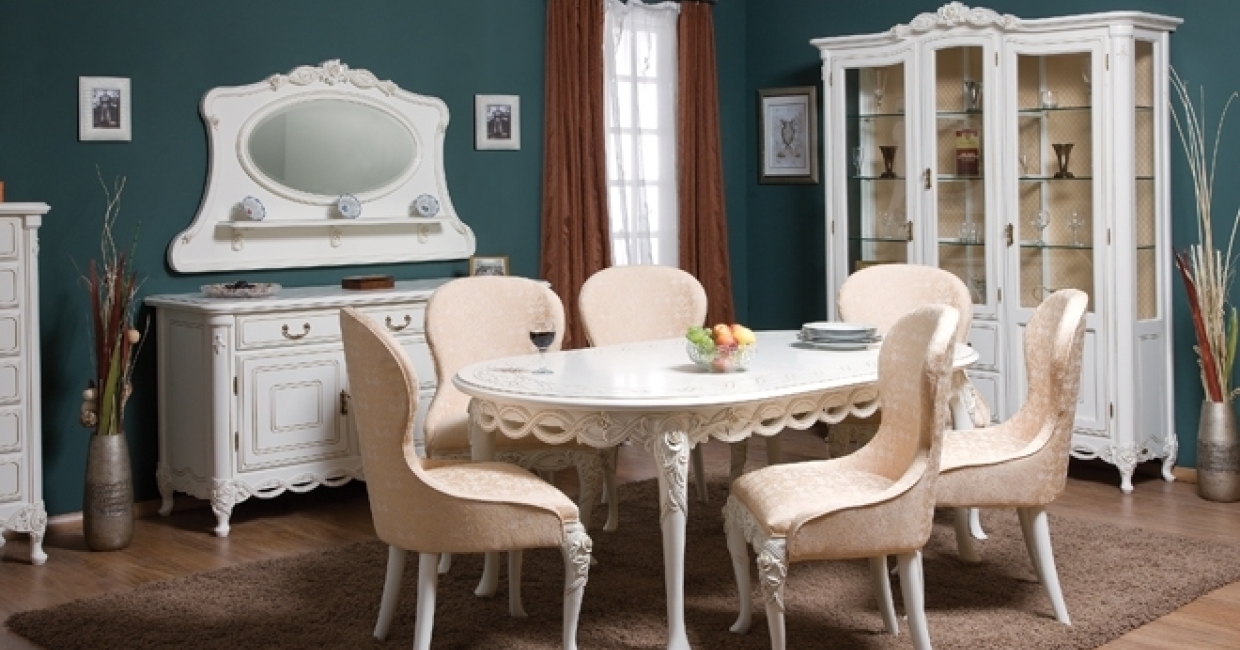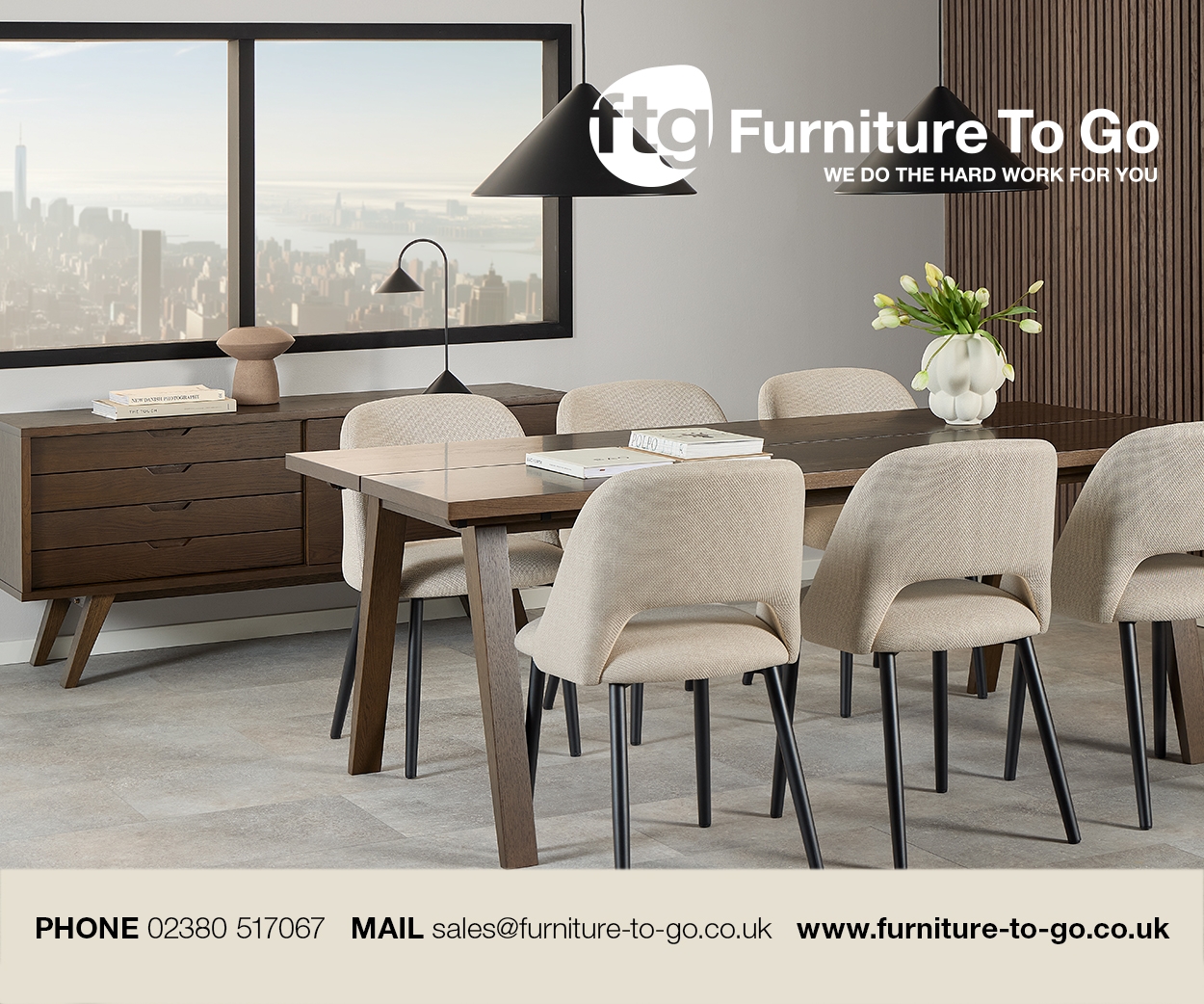The Romanian furniture industry of today has been shaped as much by current demands as it has by its long history of woodworking craftsmanship. Numerous forays into international markets – including our own, at Interiors UK earlier this year – have helped Romania’s manufacturers understand the export opportunities available.
With its population of 21.7 million and a territory of 238,391 sq km, partially covered by forests, Romania started to develop its woodworking sector over a century ago. Although only 12 furniture manufacturing companies and 70 carpentry workshops were registered at the beginning of the 20th century, official statistics show more than 3876 Romanian companies in the furniture manufacturing business at the beginning of the 21st century.
However, this activity has always been a tradition in our country, long before it became an industry – the experience and craftsmanship of the old artisans have been passed down through the centuries, ensuring a high level of domestic and foreign recognition for our furniture manufacturers.
Since those early products, exclusively aimed at satisfying the needs of small community households, woodworking has gradually developed to become more and more specialised. The activity, which was simply the business of a handful of artisans at first, slowly became an industry, and this industry reached significant proportions between 1960 and 1980. The finished wooden product area – particularly furniture – progressed spectacularly with regard to the range of products and their quality, and collaboration with clients from western countries grew after 1990.
Choosing good quality materials to produce furniture is one of the most important aspects of the production process. Having a work procedure as clean as possible – which doesn’t damage the environment or jeopardise the health of the final consumer – represents a constant concern for Romanian furniture manufacturers.
Today’s elaborate manufacturing procedures have their origins in the old methods of wood processing. Before becoming an industry in Romania, woodworking principally took the form of sculpture – a particular procedure to realise geometrical or organic forms, which could be seen on almost every wooden object in the country, from the smallest – such as tableware and stools – to gates, houses and churches.
These skills and craftmanship survive in modern plants, and the classical-style furniture, specially manufactured for the foreign market, is evidence of this living tradition. Even for the modern furniture, made from wooden panels and produced in large runs for the domestic market, traditional features are added by young designers, through designs inspired by organic forms.
“Even for the modern furniture, made from wooden panels and produced in large runs for the domestic market, traditional features are added by young designers, through designs inspired by organic forms”
One of the most important advantages of the Romanian woodworking industry proved to be a diversified and high-quality forestry base. Most of the big companies from the sector were established between 1960 and 1980, but 1990 was also a milestone in the development of our woodworking industry, as a lot of new independent plants were established that year.
At present, the SMEs have the biggest share in the industry. The furniture they make covers all the possible types of furniture – residential, office, and furniture for schools, for commercial or for public spaces. Although they have the capacity to produce classic and modern-style furniture to the same degree, the emphasis is on classical-style furniture, replicating or being inspired by old or rustic styles.
Romanian manufacturers constantly make new designs, often re-interpretations of highly-prized baroque styles – Louis XV, Victorian, Chippendale, etc – but also combinations of these. Made from valuable wood species – oak, cherry, linden, walnut, sycamore and maple – sometimes manually sculptured, and finished with high-quality materials, the furniture produced by the Romanian industry features both quality and refinement. Diversity of the offer is sustained by use of other materials including granite, matt or transparent glass, crystals, mirrors, ceramics, wrought iron or stain, bamboo, rattan or reed.
As a result of the efforts being made to improve products, Romanian furniture exports increased by 63% in absolute value through 2004-2011. Over 50% of the furniture pieces manufactured in Romania are made of beech, 20% of oak, 15% of resinous wooden species, and the rest of other species. The labour force that works in the furniture sector amounted around 50,300 in 2011, which represented 5% of the total labour force working in the Romanian manufacturing industries.
Constant concerns of the industry include the extended use of ecologically-sound materials and the ongoing improvement of product design. Designers and furniture manufacturers co-operate frequently in order to create better furniture pieces. In order to support co-operation, discover new talents and enlarge manufacturers’ choice regarding future collaborations, the Romanian Furniture Manufacturers’ Association (APMR) and its partners – Bucharest University of Architecture and Urbanism (Ion Mincu), Transilvania University in Brasov, the Romanian Professional Designers’ Society (SDPR), the Design Department of the Bucharest National University of Fine Arts, and the University of Arts (George Enescu) in Iasi – together with two fair organisers, Euroexpo Trade Fairs and Romexpo, organises the annual National Design Furniture Contest, which provides equal opportunity for both graduates and students of architecture and design universities all over the country.
The contest takes place in two stages – Creation, in which participants submit their ideas about new furniture products, and Prototype, in which the contestants focus on transposing the projects selected by a jury during the first stage into prototypes. All resulting prototypes are exhibited within a special stand at the most important international furniture event in Romania, which this year will be BIFE-SIM. The best six prototypes are awarded prizes during the fair.
The Romanian furniture sector during economic crisis
As with the most of the European furniture sectors, the Romanian furniture industry slowed down during 2008-2011. The weight of the furniture export within the furniture production has varied largely for the last four years, ranging from 56.1% in 2009 to 76.3% in 2011. The smallest ratio was registered in 2009, when both furniture output and exports decreased by 5% and 7.2% respectively compared with the previous year, as a result of a drifting international furniture market, while exports accounted for 57.6% of furniture production in 2008 based on a strong evolution of sales during 2007.
The economic crisis strongly affected Romanian furniture companies – the weakest went bankrupt, closed or changed their activity, while those who had previously borrowed large amounts of money from banks still struggle to survive.
Sales on the domestic market decreased steeply, as a result of both the mindset created by the uncertainty of the future, and the austerity measures taken by the Romanian Government, while furniture imports saw the same decreasing trend. The steepest decrease of imports was registered in 2009 – by 36.3% when compared with 2008.
International fair attendance
Romanian furniture manufacturers attend, either as exhibitors or simple visitors, key furniture-specialised exhibitions all over the world. As well as having had a constant presence at the Cologne fair since 1970, they have successfully participated in Interiors UK, I Saloni, Expo Mebel Moscow, KIFF Kiev, High Point, Index Dubai, Maison&Objet, Meubelbeurs and more over the last 10 years.
Nine Romanian furniture manufacturers and interior decoration companies participated in Interiors UK in January this year. On a 308m2 area within a national common stand they brought a large offer of both classic-style and modern furniture in various colors and finishes.
Companies such as Nord Simex and GLC Mob Arad – two of the most famous classic-style Romanian furniture manufacturers – exhibited delicate marquetry-decorated solid wood furniture pieces, while Spiral Wood from Sfantu Gheorghe displayed various home furniture products worked in solid wood, and veneered wood-based panels with lots of spiral wooden decorative and structure elements as well as interior stairways.
Design Media, a company specialised in manufacturing tables, colonial chairs, bentwood and rustic chairs as well as small furniture, exhibited a public space furnishing-oriented range of solid wood chairs, tables and benches. Capitol Impex brought the classic-style furniture offers of several other Romanian companies to the English market and international buyers visiting Interiors UK, while Casa Rusu and Rus Savitar exhibited modern melamine and HPL chipboard furniture as well as elegant modern upholstery.
Art Glass Productie exhibited impressive decorative glassware, while Sophia Innovation displayed a whole range of furnishing products such as lovely curtains and good quality blankets.
The Romanian companies’ participation in Interiors UK 2013 has been quite successful, and we really expect further business results will reflect the English market’s appreciation towards high-quality, carefully-applied ecological finishes and modern design of their products.
As statistics have lately shown, Romanian furniture and interior decorations are positively appreciated by buyers and consumers throughout Europe, so every good business result our companies will get as a follow-up of their participation in Interiors UK will be a good incentive for them to come back next year and once again appreciate English hospitality and professional show organisation.
Style, comfort, durability – Romanian furniture
Production standards are high in the Romanian furniture industry, due to the fact that exports have played a major role for many years. Most of the Romanian companies offer high-quality products with improved design and functionality and excellent finishings to suit their target markets, and a series of investments in state-of-the-art manufacturing equipment supports these efforts. Additionally, many exporter companies have been certified by prestigious European companies for their quality, environment or health and safety standards.
Individual business investments and efforts deserve recognition, so an important investment at the macro-economic level occurred almost five years ago, when a Romanian furniture sectoral brand was born. “Style, comfort, durability – Romanian furniture” is its slogan, and specific programmes have been carried out with Governmental support for the last four and a half years to constantly draw the public’s attention to Romanian furniture, while reinforcing efforts to maintain the high profile of the sector.
APMR – a dynamic presence within the national economy
APMR is a Romanian legal entity, established in 1992 as a non-governmental and non-political organisation. It is also a non-profit, autonomous, employers’ organisation working for the benefit of the Romanian companies in the furniture and wooden products business.
APMR is the publisher of Mobila magazine, the oldest Romanian furniture magazine, which has been a member of the International Alliance of Furnishing Publications (IAFP) since 2008. It is also a representative organisation of the Romanian furniture industry, as it has about 350 member companies, which employ more than 30,000 people – accounting for around 60% of the workforce in the Romanian furniture industry and around 46.4% of the workforce in the woodworking industries. The exports of the furniture companies associated with APMR amount to 70% of all Romanian furniture exports.
APMR participates in social dialogue meetings – both on national and EU sectoral levels – on behalf of its members, and represents the Romanian furniture manufacturers in the international furniture industry organisations, such as the European Furniture Manufacturers’ Federation (UEA) and World Furniture Confederation (WFC), to which it became affiliated in 1995 and 2007 respectively. It also participates in national industry organisations such as the National Export Council.
BIFE-SIM – a unique specialised event in Bucharest
APMR represents the legal, commercial and economic interests of its members. Among the activities that sustain its commitment to promoting the Romanian companies was the establishment of the Bucharest International Furniture Salon – SIM Bucharest – in 2011. The fair was registered as APMR’s own trademark, and its first two editions were very successful.
However, this year APMR is going to organise a larger event due to collaboration with Romexpo SA Bucharest, the owner of the largest exhibition centre in Romania. The result of this co-operation is called BIFE-SIM 2013, and will be held at Romexpo, Bucharest, through 17th-21st September. BIFE-SIM 2013 is expected to gather under the same roof more than 300 Romanian and foreign companies working in the furniture and furniture-related industries. These companies will take advantage of a whole exhibition area that amounts to more than 30,000 sqm.
“BIFE-SIM 2013 is expected to gather under the same roof more than 300 Romanian and foreign companies working in the furniture and furniture-related industries”
The event is organised by APMR, Romexpo SA and Euroexpo Trade Fairs SRL, together with the Romanian Chambers of Industry and Commerce – national and local – at Romexpo Exhibition Centre in Bucharest. Given the involvement of the organisers in the promotion of the Romanian industry, BIFE-SIM will benefit from a well prepared marketing campaign, as well as an interesting hosted buyers programme.
BIFE-SIM 2013 is an international autumn exhibition not to be missed, as the most important Romanian furniture companies and woodworking machinery and tool – as well as raw material and accessories – providers will be present. Flexibility and a competitive price-to-quality ratio are the main ingredients of the exhibitors’ offers in BIFE-SIM 2013, as proved by the Romanian companies’ presence in many international fairs that have been held in Europe since the start of the year. Foreign exhibitors and visitors, press and specialists – designers, suppliers and architects – will be welcome to enjoy traditional Romanian hospitality and high-quality furniture products.
Andreea Paraschiv is the IT and PR manager for the Romanian Furniture Manufacturers’ Association (APMR), and the editorial secretary general of the APMR-published Mobila magazine, the Romanian member of the IAFP.









